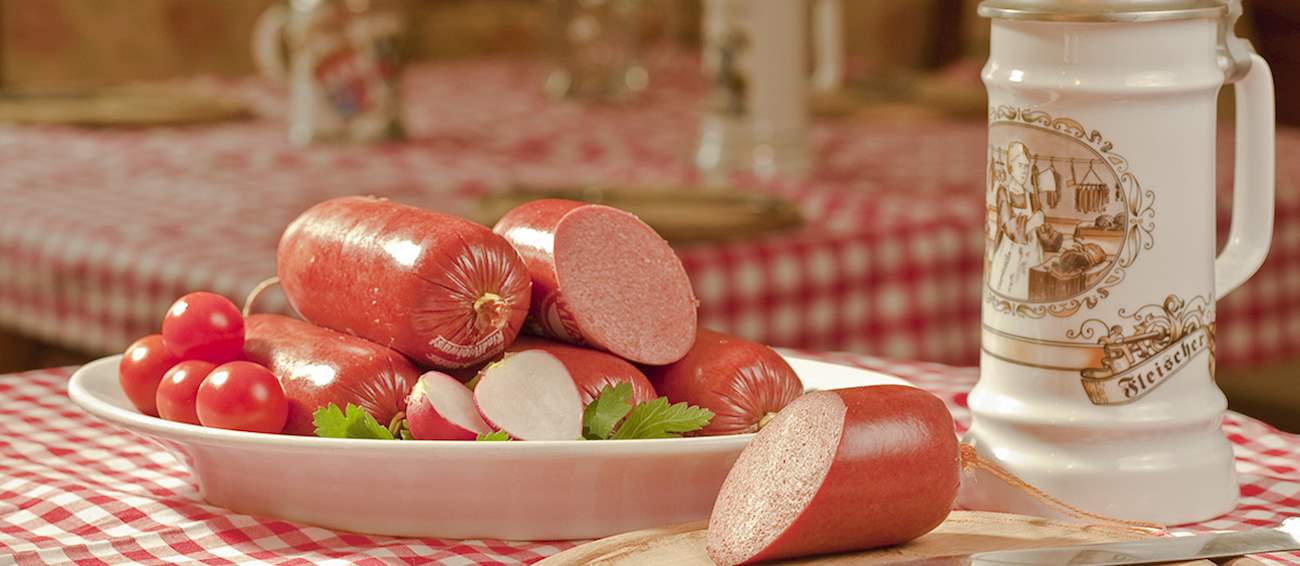Best Bavarian Sausage/Salami Types
Bierschinken Wurst (lit. beer ham sausage) is a variety of parboiled German sausage with chunks of pickled pork meat or cooked ham. It typically consists of finely ground pork, bacon, water or ice, salt, and spices such as mace, ginger, cardamom, coriander, and white pepper.
After it is combined with the meat pieces, the sausage mixture is typically filled into natural or artificial casings, and it sometimes gets smoked before cooking. Although it is mostly prepared with pork, the sausage can also be made with beef or poultry, or any combination of pork, beef, and poultry.
This spreadable, cold-smoked beef sausage is produced exclusively in the Bavarian town of Hof. It's easily distinguished by its so-called umrote – an appealing red color that the sausage acquires during the manufacturing process. Rindfleischwurst spreads easily, and its well-rounded flavor is obtained by cold-smoking over beech wood.
The original recipe has been kept a secret for over 30 years, but the basic ingredients used to make this German delicacy include beef, pork, bacon (no more than 30%), salt, and a special mix of spices. Rindfleischwurst is usually spread over toasted bread and paired with a glass of German beer on the side.
Bergsalami is a type of dry-cured salami traditionally made in the Alpine regions of Austria, Germany, and Switzerland. The name "Berg" means "mountain" in German, reflecting its origins in mountainous areas where traditional curing and drying techniques have been perfected over centuries.
This semi-hard salami is typically made from high-quality pork or a mix of pork and beef, seasoned with garlic, black pepper, and spices, and encased in natural or artificial casings. It is then slowly air-dried and sometimes lightly smoked, developing a rich, mildly tangy, and smoky flavor with a firm texture.
THE BEST Bergsalami Salamis
TasteAtlas food rankings are based on the ratings of the TasteAtlas audience, with a series of mechanisms that recognize real users and that ignore bot, nationalist or local patriotic ratings, and give additional value to the ratings of users that the system recognizes as knowledgeable. TasteAtlas Rankings should not be seen as the final global conclusion about food. Their purpose is to promote excellent local foods, instill pride in traditional dishes, and arouse curiosity about dishes you haven’t tried.





